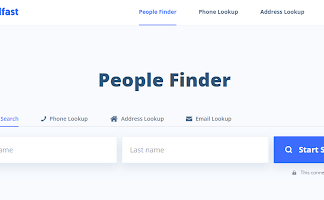Customers-focused digital offers, such as Flexcube have been a major focus for retail banks over the last ten years. When it comes to small and medium-sized businesses (SMEs) to major corporations, commercial and corporate banking has not had the same successes in enhancing client experiences.
For most commercial and corporate clients, the typical time it takes to get a decision might be several weeks (or even months), plus the time it takes to release cash (when the funds are actually available).
Commercial customers are no longer willing to put up with significant delays in getting the money they need to run their operations. As a result, customer satisfaction with the major financial service providers has slipped below 50%. No doubt commercial and corporate financing has to be digitized through Oracle Flexcube, but how to do so is a mystery.
The promise of personalized customer-centric experiences, innovation, agility, and efficiency invokes the attractiveness of digital transformation. When it comes to digital transformation, “if you think of digital transformation as two terms, we pay too much attention to the digital and not enough attention to transformation.” It’s very uncommon for us to discover that the most challenging component of the equation in digital transformation is not the technical one but the human one. Digital transformation requires a fundamental shift in business and operational paradigms, as well as a cultural shift in the way people think and work.
Why haven’t banks been able to alter their commercial and corporate businesses more quickly (and more successfully)?
- Customer segments, products, and geographies: Commercial and corporate financing is notoriously tricky because of the wide variety of clientele it serves. When it comes to credit, a sole proprietor’s demands are very different from those of a multinational organization, which has accounts in dozens of other financial institutions across the world, manages several currencies, and operates in multiple time zones. The application and evaluation procedure for commercial and corporate banking clients may be the same, notwithstanding these variances.
- Relationship-based model: It’s difficult to “digitize” commercial and corporate banking since it relies so heavily on long-term relationships built through years of face-to-face interaction.
- Processes and dated operating model: Most banks’ commercial and corporate lending now includes many handoffs between front-line, middle-office, and back-office departments. As a consequence, there are frequently delays, inaccuracies, and excessive expenditures as a result of the use of paper documents (requiring wet signatures or rubber stamping (sometimes literally)) as well as email and phone discussions. For new customers, onboarding and Know Your Customer (KYC) procedures add additional complexity and delays, only to discover later that the internal operations do not efficiently communicate internally and that comparable information and paperwork must be submitted again to acquire credit.
- Legacy systems: These legacy systems, despite being common in the commercial/corporate lending industry and not unique to the industry, are an essential barrier to digital transformation to Oracle Flexcube universal banking because of the high costs and complexity associated with the deployment of changes, integration of internal/third-party applications and the difficulty in finding technical resources who are knowledgeable about legacy architecture/code.
Common pitfalls in commercial and corporate lending transformation
- Lack of clear strategy and priorities: As a result of their wide client base and worldwide scope, banks are sometimes unable to articulate a clear strategy and set of goals. A “one size fits all” solution is typically the consequence. It falls short of meeting customer expectations, driving efficiency, and providing the promised return on investment.
- Digitizing parts of the process: New customer interfaces and digitalization of the origination process tend to take precedence overlooking the whole journey. Attempts to incrementally enhance the commercial and corporate credit lending process often lose focus and fail to provide the anticipated results.
- Underestimating data integrity issues: For the most part, credit cycles are set up using antiquated technologies, requiring a number of teams to undertake manual operations in order to compensate for the systems’ limited functionality. As a result, offline workarounds and extra degrees of data validation and “improvement” are being used to compensate for the lack of trust in data integrity.
Make it happen
- Be strategic and deliberate: It is essential to have a clear understanding of your organization’s goals and the problems it’s seeking to tackle. This is particularly essential in the commercial and corporate lending sector since it covers a broad spectrum of customers. It’s critical to identify and prioritize which clients are most important to your business and to recognize that a single solution won’t (and shouldn’t) work for everyone. Prioritizing SMEs may be an option for some since they have a higher volume and lower risk of default, allowing for a self-service and automated credit/lending procedure. Others may prioritize major corporations and focus on strengthening the relationship-based model that enables relationship managers to expedite the process of acquiring the greatest available credit facility in the most efficient manner.
- End-to-end journey: Avoid becoming sidetracked by the desire to digitize and change the process by focusing on the end-to-end client journey. Many of the best results may be achieved when front-line personnel works with risk professionals and consultants who bring cutting-edge technology and industry expertise to bear.
- Agree target operating model: In order to adapt commercial lending’s value chain to the new customer journeys, it is necessary to recognize that many linked aspects of the old system must be re-configured at once. For example, there may be changes in defined team boundaries, task ownership, and communication between previously isolated sections.
- Integrated technology and data: Take into account and educate your key stakeholders that without considerable investment in the back-office and IT stack, you will not be able to change operations or react to customer and market demands quicker using AI. At the same time, it may be beneficial to collaborate with external suppliers, such as BankPoint offering an intuitive banking platform, to build new skills; but do so only if you know exactly what value you anticipate from the collaboration and how to deal with internal issues and concerns.
Despite the fast advancement of technology, customers’ expectations will continue to shift, and companies will have to adapt. This is just another incentive to modernize the loan process while also creating a flexible organization that can keep up with the rapid pace of change that lies ahead. At JMR Infotech, we are experts in Flexcube core banking, and we can provide excellent solutions to you. Just reach out today.


























